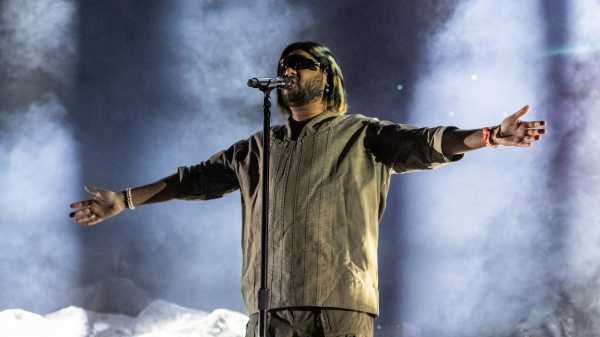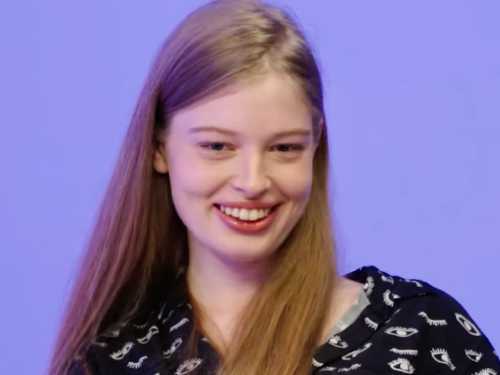
In 2009, the Internet was not yet algorithmically consolidated; it still seemed like a vast landscape of oddly shaped rocks that you could turn over to find something new. Around that time, an Indian British musician named Jai Paul, from the suburban neighborhood of Rayners Lane, in northwest London, uploaded an old demo to MySpace titled “BTSTU.” He was nineteen, maybe twenty. The demo began so quietly that you had to turn the volume up, just to hear static. Then came a sweet, offhand falsetto loop, a phrase that was sung like a person trying to dig up a memory; then a kick drum, a snare, a full-body synth shudder. The song built to something mournful, gorgeous, and overwhelming. “I know I’ve been gone a long time, but / I’m back and I want what is mine,” the refrain went. Music blogs discovered the song in 2010. Soon, it was playing all over U.K. tastemaker radio; Drake and Beyoncé both sampled it. The pulse-setting d.j. Zane Lowe named “BTSTU” the Hottest Record in the World.
Paul signed to the indie label XL, and gave his first and only interview, to Dazed, in 2011. It was very short. Fans learned that he didn’t own an iPod, still listened to the music he liked as a kid, and had turned down major-label offers. He considered himself “kind of a hippie.”
He released a second demo, in 2012, a throbbing, yearning track called “Jasmine.” Certain sonic signatures came into focus: Paul had a distinctive way of mixing, abruptly vacuuming the air out of his tracks and making sounds arrive like fog rolling across an ocean; there was a muscular use of silence. The following year, a series of untitled Paul tracks appeared on the independent music-purchasing Web site Bandcamp. They were also clearly demos, with inconsistent sound quality, and the collection didn’t sound complete or sequenced; they were quickly scrubbed from Bandcamp, and Paul posted his first known tweet, explaining that he hadn’t uploaded the music. “This is not my debut album,” he wrote. It was received as such anyway, and was celebrated—Pitchfork listed it at No. 20 in its top fifty albums of the year. I listened to track seven—a cover of Jennifer Paige’s bubblegum-pop song “Crush,” which Paul had turned into something skittering, gasping, and bruised—over and over. Paul’s idiosyncratic, tunnelling instincts conjured J Dilla, Daft Punk, D’Angelo, Prince; he was in the source code.
The public still knew almost nothing about him. And, after the leak, he retreated entirely. But his influence continued to spread: if an electronic track blew up on SoundCloud anytime in the mid-twenty-tens, it was probably trying to sound at least a little like Jai Paul. In 2015, Lorde tweeted, “Someone should start a jai paul imitation fund and donate every time an indie pop bro puts a song out that rips him #justice.” Two years later, “Homemade Dynamite,” one of the standout songs on Lorde’s sophomore album, featured a chorus interlude that recalled Paul so vividly that people wondered if he had secretly worked on the track. By then, he and his brother, A. K. Paul, who is also a musician and producer, launched a project called the Paul Institute, which, in 2017, was described by Property Week, a U.K. real-estate magazine, as a “growing collective of musicians, artists, and technologists.” (The Paul brothers had bought a building in London for their venture, hence the story in Property Week.)
In 2019, XL formally released the rogue upload from 2013 as an album titled “Leak 04-13 (Bait Ones).” The package included two new songs, “Do You Love Her Now” and “He”—the only finished tracks Paul has put out to date. Paul released a long accompanying statement, explaining that the leak had come from a misplaced burned CD, and that he had found the experience devastating. “I felt pretty alone with everything, like no-one else seemed to view the situation in the same way I did: as a catastrophe,” he wrote. He had been frustrated by speculation that he’d orchestrated the leak to generate hype, and by people who’d told him he should keep things ambiguous. He had started writing that music when he was a teen-ager, and he’d never had the chance to present it properly, and the leak was all that anyone asked him about for years. “On a personal level, things gradually went south and I had a breakdown of sorts,” he wrote. “I was unable to work and withdrew from life in general.”
It was a surprise, then, when Jai Paul’s name appeared on the poster for Coachella 2023. He had never performed live; his most public appearance to date had been a barely noticed cameo in a Season 3 episode of “Atlanta.” (“Racism and capitalism, hard to separate, innit?” he said, wearing glasses.) His performance during Coachella’s first weekend was underwhelming—he barely moved onstage, and didn’t address the crowd. (A friend who was there texted me, “You’ll be shocked to learn that an artist that spent a decade too socially anxious to play a show or even finish a song failed to deliver a popping Coachella performance in their live debut.”) His extreme reputation-to-output ratio has always provided grounds for skepticism: perhaps he was a clothesless emperor, just a guy making music that sounded as if your speakers weren’t working right.
Reports from his second-weekend performance were sunnier, and by then Paul had announced four more live performances: two in New York and two in London. I entered a one-dollar lottery in the hopes of being “selected for an opportunity to purchase tickets” to his first real show, at the Knockdown Center, in Queens, the following Tuesday. (Ten thousand people purchased this opportunity for the Knockdown set, and thirteen thousand for Brooklyn Steel the next night.) I felt moderately scammed by the process until I was selected, and then I bought tickets and went.
The crowd was heavy on men who looked like they were auditioning for a not-funny comedy set in Bushwick. A lot of people were wearing work boots; I was sure that nearly all of us spent our time in front of computers. Paul was supposed to go on at nine, and, at nine-twenty, the girl next to me sat down as if she were settling in for the long haul. The figure of the anxious artist, incompatible with the industry and unable to deliver, is a familiar one, and it hovered over the evening. (Frank Ocean had recently bailed on his own second Coachella set after botching his first-weekend performance.) When Paul came out at nine-thirty-five, the crowd screeched, like no one could believe it. He was backed by his brother on guitar and the Paul Institute artist Fabiana Palladino on keyboards, plus a drummer and a bassist; he wore a white tracksuit with orange piping and goggle-like sunglasses, and sang against a projection of college-dorm-room screen-saver visuals. The sound wasn’t great—a familiar feature of the venue. Paul’s over-all vibe was that of a time traveller. He had been ahead of the past decade of music, and now he was playing a ten-year-anniversary nostalgia show that was also his début.
He was stiff, but people cheered for him as though he was their nervous son, and he got looser. Between songs, he clapped with his hands over his head, a gesture of gratitude, and at some point he started to smile, and started to move. (He didn’t talk to the crowd.) The tracks from the leaked album were bigger with live drums; in the room, you could hear the texture and timbre of his voice in far more detail, the way he dove into and out of different registers, flipping from lidded to soulful to soaring. The air felt full of the things that we had all projected onto Paul’s music in the past ten years: charged late nights, mishandled potential. These songs had felt like an empty house, where we could hang our own pictures on the walls. But the house had never been empty at all.
The crowd cheered through an out-of-key start to “Jasmine,” and let out a visceral howl of pleasure when Paul started “BTSTU.” Years ago, someone using the name Jai Paul had commented, on a WordPress music blog, that the letters stood for “Back to Save the Universe.” The room sang the refrain together: “I know I’ve been gone a long time, but / I’m back and I want what is mine.” My friend asked me, “Do you think this is the best set of his life?” Probably, I replied—it was his third. Then the room lit up for his last song, “Str8 Outta Mumbai.” When the sample broke in, I was amazed again that the show was happening at all, as it was, charged and uneven. For years it had been hard to imagine that we’d ever hear any of this music played live.
It was unclear why Paul was doing it now. Surely paychecks had been dangled in front of him in the past. He played one new song, called “So Long.” Was he gearing up to release a new album? And was he now going to do all the things strangers thought he might be capable of? It was a question that a lot of us in the audience, floating quicker on the current of our thirties, might have been asking ourselves. Was there a real hurry for any of it? Wasn’t there still so much time? ♦
Sourse: newyorker.com






